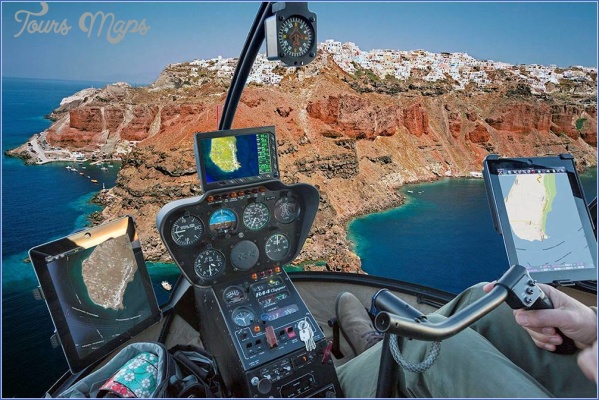OVERVIEW OF THE ISLAND HISTORY
After the eruption of the volcano in about 1500 I3C, the island remained uninhabited for some two centuries. Traces of human life have been found, dating to the late 13th century BC. According to
Herodotus, the Phoenicians were so enthralled by the beauty of Santorini that they settled there and gave it the name Calliste (which means most beautiful). There is a myth that the first colonist of the island was called Mem-bliarus, who settled there with some of the companions of Cadmus. (Cadmus was the son of the Phoenician king Agenor, and he had undertaken the search for his sister Europa, abducted from her home by Zeus in the guise of a bull. During his travels, he visited Santorini and founded a small colony there.)
Tradition also relates that later the Minyans from Boeotia established a settlement on Thera. Herodotus, however, informs us that at the end of the 12th century BC the Dorians arrived from Sparta, led by King Theras, who was the son of Aute-sion, a descendant of Cadmus and great-grandson of Oedipus. Although he was a Theban hero, Theras lived in Sparta as regent and guardian of his young nephews, Procles and Eurysthenes. When they came of age, Theras left Spaita and sailed to Santorini, where he settled. Ever after, the island was called Thera in his honour.
Travel to Santorini Photo Gallery
By the 9th century BC, the island was a thoroughly Dorian colony, whose centre was at Ancient Thera on a fortified position on Mesa Vouno (‘Middle Mountain’). During this time, Santorini, along with the coastline of southeastern mainland Greece, Crete, Melos and Cyprus, constituted a bridge unifying East and West. True descendants of the Spartans, the Therans created a closed society which permitted few influences from outside, and those only from residents of neighbouring islands. However, the location they had chosen was so crucial to sea communication that, although the island did not
Thus, by the late 9th or early 8th century BC, Thera, Crete and Melos were the first places to adopt the Phoenician alphabet as a way of writing the Greek language. In the 7th and 6th centuries BC, the island began to have contact with other regions of Greece: first with Crete and Paros, and later with Attica, Corinth, Rhodes and Ionia in Asia Minor. Its inhabitants subsisted on a frugal diet, consisting solely of what the island could produce. They were not concerned much with either trade or shipping. The first people to leave the island did so in 630 BC, founding a colony on the north coast of Africa called Cyrrhene. They only resorted to this after a long period of drought, which ravaged the island for seven years.
By the 6th century BC Thera was minting its own currency. During the Classical era (5th and 4th centuries BC), it was content to remain on the sidelines. It was subjugated by the Persians and the mint ceased functioning. During the Peloponnesian War, Thera allied itself with the Spartans. In 426/425 BC it came under the control of the Athenians and was forced to join the Delian League. When the Macedonians gained supremacy over the rest of Greece, Thera too followed. Likewise, during the Hellenistic period, it was ruled by the Ptolemies of Egypt, who valued its strategic location enough to found a harbour called Eleusis there. They also transformed the Mesa Vouno district, where Ancient Thera was located, into a major base for the military operations they were conducting in the Aegean. Linder Roman domination, after 146 BC, Thera fell into total ob- scurity. Within the vast stretches of the Roman Empire it was nothing more than one of the scores of inconsequential Aegean islands. During the Byzantine era, it acquired a modicum of political and military significance. It was incorporated into the Byzantine Empire and belonged to the ‘Theme’ of the Aegean. Christianity must have reached Thera in the 3rd century. By the end of that century there were already converts to the new religion on the island. By the start of the 4th century there was an organized church on Santorini, which is referred to as the Bishopric of Thera, the first bishop having been Dioscurus (342-344). It was one of eleven bishoprics that were subject to the Cathedral of Rhodes, and it ranked fifth in seniority. The prosperity of the Christian community on Thera in the Early Christian era is borne out by the existence of three old basilicas. One of them was erected at Ancient Thera on Mesa Vouno and must have been dedicated to the Archangel Michael. The second was built on the site of the present Byzantine church of Piskopi Gonia. It was on its ruins that in 1081-1118 the emperor Alexius 1 Comnenus founded the church of Our Lady of Gonia or Piskopi, which may have been the main church of a monastery. The third basilica was erected at Perissa where the Byzantine church of St Irene stands today.
Maybe You Like Them Too
- Top 10 Islands You Can Buy
- Top 10 Underrated Asian Cities 2023
- Top 10 Reasons Upsizing Will Be a Huge Travel Trend
- Top 10 Scuba Diving Destinations
- World’s 10 Best Places To Visit
















